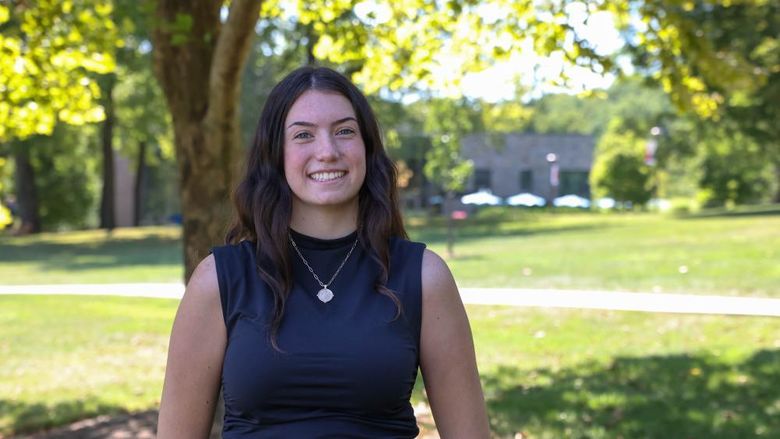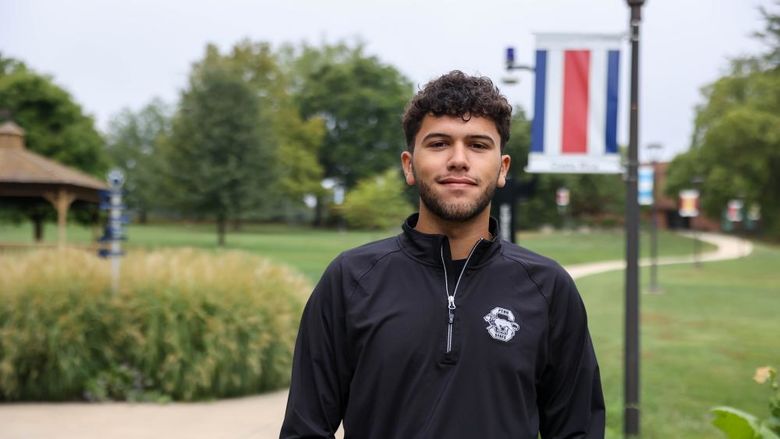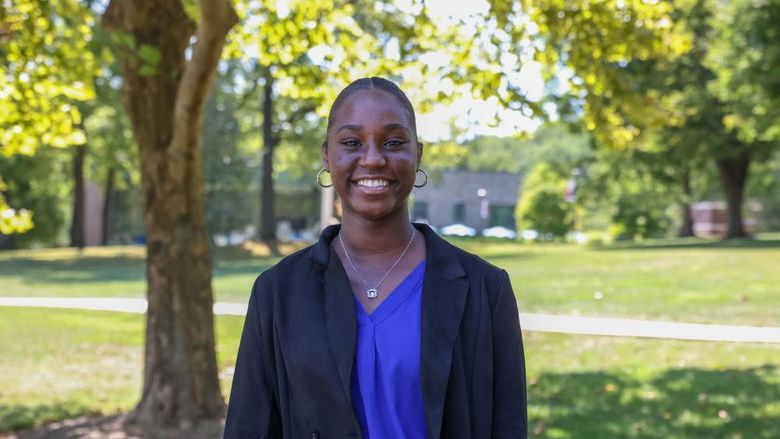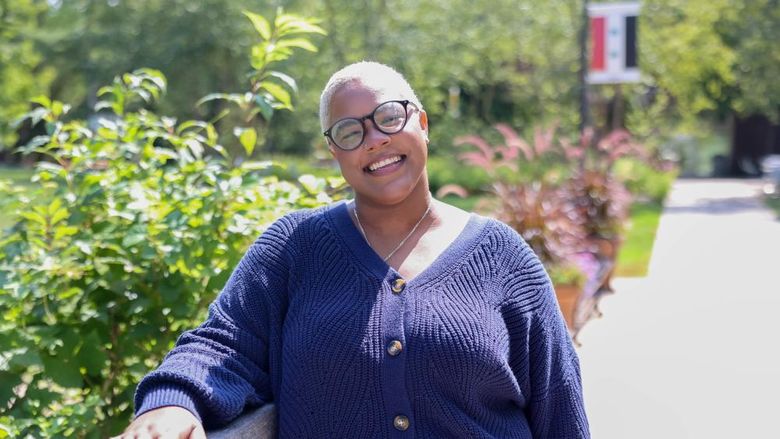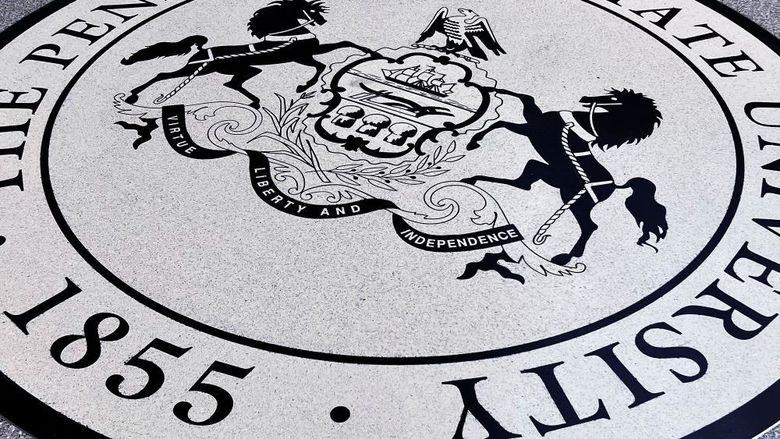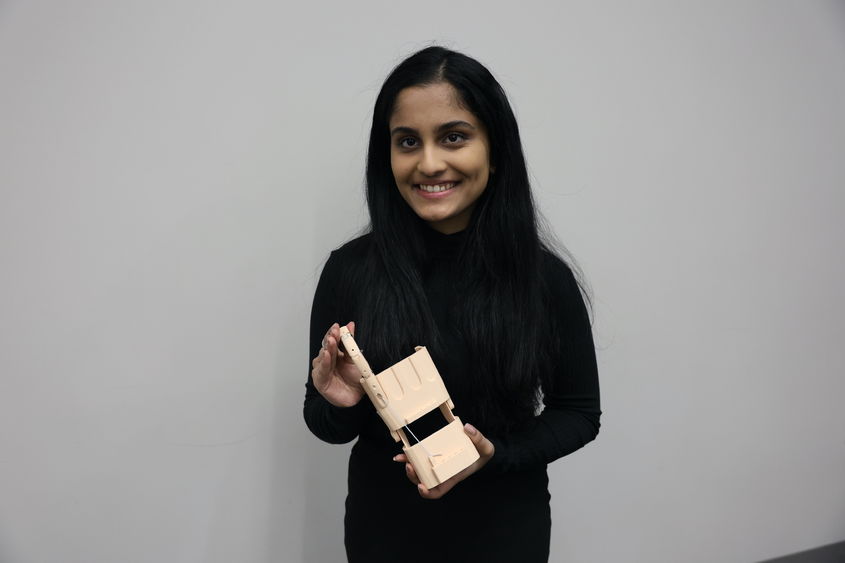
Pratima Oulkar, second-year biomedical engineering major, 3D-printed a prosthetic hand to present at the Fall 2023 Honors Symposium.
MEDIA, Pa. — Second-year biomedical engineering major Pratima Oulkar created a prosthetic hand using a 3D printer to present at Brandywine’s Fall 2023 Honors Symposium. Working alongside Megann Hedgecock, lecturer in engineering, the entire process of creating the prosthetic took one full semester of researching, developing and presenting.
Oulkar’s journey to presenting at the Honors Symposium began during her first year of college when she attended her first symposium. She was so inspired by her peers who presented their projects and theses, and she knew she wanted to present at least once at the Honors Symposium before she transitions to University Park.
“The Honors Symposium was a great space to share my ideas and get a lot of feedback from other members of the Honors community,” she said. “It was great to hear how I could improve on the project, as well as what my colleagues liked about it. My experience got me thinking about what future projects I wanted to take on as well.”
Oulkar began working on her project at the beginning of the Fall 2023 semester. Her secondary research process consisted of learning about what the prosthetic field is, what it entails and different areas on the subject. From there, she learned about the challenges and benefits of prosthetics, the manufacturing and design processes, and how prosthetic engineers have to create custom prosthetics for each individual who needs one.
“I initially wanted to create the prosthetic hand because I was interested in exploring the different areas of my major before I transition to University Park next academic year,” Oulkar said. “I’ve always been interested in the field of prosthetics, and I wanted to know what it takes to create and design a functional prosthetic.”
While conducting research, Oulkar found that prosthetics are important because they enhance patients’ quality of life, increase mobility and independence, improve patients’ psychological well-being, increase social integration, provide career opportunities and have physical health benefits. Despite these advantages, she found that prosthetics also come with challenges, including expenses, lack of access in rural or less-developed areas, durability and the inability to have a one-size-fits-all prosthetic.
Once the research was complete, Oulkar went on to model and create her prosthetic hand. Using the SolidWorks system at Penn State Great Valley’s manufacturing lab, she constructed her prosthetic hand using a 3D printer.
Oulkar’s long-term goal in her undergraduate studies is to learn more about how medical devices work, and she wants to take on more projects that will expand her horizons in that field. Currently, she’s working on a project where she is creating a pulse oximeter – a device that measures blood oxygen level – from scratch.
Hedgecock mentioned that although this was her first time working in the prosthetics field, she really enjoyed working and learning with Oulkar on her Honors Symposium project.
“Pratima is an incredible student; she’s very intelligent and motivated. I taught her last year in Cornerstone Engineering Design (EDSGN 100) and last semester in Statistics (EMCH 211), where she did the Honors Option and her prosthetic hand process,” Hedgecock commented about Oulkar. “This was also my first time working in the prosthetics field, so it was an absolute joy to learn alongside Pratima.”
